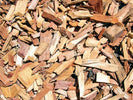
Wood Pulp in Your Burger? Yep. A Look at Cellulose.
, by Dr. Jeff Pearl, MD, 2 min reading time

, by Dr. Jeff Pearl, MD, 2 min reading time

Many of you may have seen recent articles regarding the addition of wood pulp derived cellulose in your favorite fast food burger. Cellulose is a natural carbohydrate component of all plant cell walls including all fruits and vegetables, and yes, even wood.
By definition, cellulose is organic—being composed of oxygen, hydrogen and carbon—that’s it. Many animals such as rabbits, beavers and ruminants like cows can digest cellulose and absorb the carbohydrates in it. However, humans are unable to do so. In humans, cellulose falls into the category of indigestible carbohydrates known as dietary fiber.
Cellulose is used for a few reasons:
For those of you like me, who enjoy eating salad, lettuce is full of cellulose. We eat salad to fill up when on a diet and to add fiber to our diet to promote bowel function. It also tastes good and has nutrients. Same thing goes for a good apple. Nobody raises an issue with eating cellulose contained in lettuce, apples, or carrots. So why should it matter if we eat cellulose derived from wood pulp? It shouldn’t and it doesn’t. Cellulose is simply oxygen, hydrogen, and carbon regardless of its plant based source. The fact that much of the cellulose added to your burger, salad dressing, ice cream, or your pills is often derived from wood pulp is merely because it is efficient and cost effective rather than wasting other edible foods to derive it from.
We all have choices; we can eat food filled with fillers or eat natural raw foods like fruits and vegetables.


![PRōZE Review [2020 Update]](http://hihealth.com/cdn/shop/articles/cbd_insider_article_graphic_featured_image-11.jpg?v=1591495027)